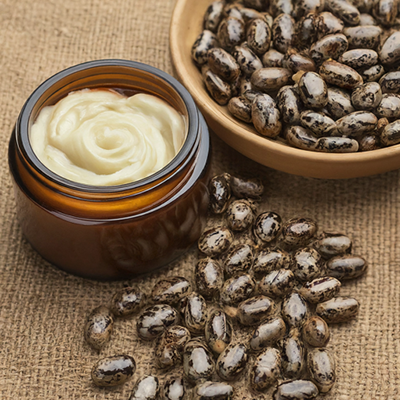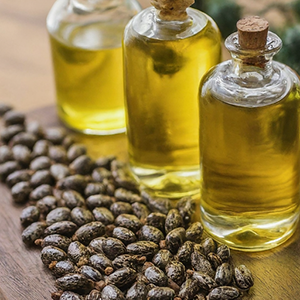Contents
Dioscorides already knew the purgative properties of castor bean oil in the 1st century A.D.; however, the castor bean plant was not used in Europe until the 18th century.

Castor Bean Scientific Facts
- Scientific Name – Ricinus communis L.
- Other Names – Bofareira, castor-oil plant, Mexico seed, oil plant, palma Christi.
- French – Ricin, palma Christi.
- Spanish – Ricino, palmacristi.
- Environment—It is native to tropical Africa and has spread worldwide to warm regions. It is farmed for medicinal purposes.
- Description—A herbaceous plant growing in warm climates, it is a shrub and even tree-like in tropical regions. It belongs to the Euphorbiaceae family and has large, palm-shaped leaves and thorny fruit with three seeds inside.
- Parts of the plant used medicinally – The leaves and the seed oil.
Healing Properties

Castor bean seeds contain around 50 percent oil, ricinine (an alkaloid), and ricin, a toxic glycoprotein that agglutinates red blood cells but remains in the seed’s flesh after extracting its oil.
At the recommended doses, castor bean oil produces a mild purgative effect some two hours after intake. It is non-irritant, with no colic or cramps. It effectively heals any constipation case, even those in children. However, in the case of chronic constipation, we recommend adopting dietary measures as well as employing milder laxative substances. It is also helpful to expel intestinal parasites.

Externally used, both the plant’s oil and seeds have emollient and healing properties. They are applied as lotions and poultices for eczema, herpes, wounds, burns, and skin rashes to fight hair loss.
Warning
An intake of three seeds can cause death to a child and 10 to 15 seeds to an adult person.
How to use Castor Bean
- As a laxative, the dose is 5 to 10 grams of oil for children and 15 to 30 grams for adults, taken in the morning on an empty stomach.
- Lotion with the oil on the affected skin area.
- Poultices with mashed fresh leaves.
DISCLAIMER: All content on this website is presented solely for educational and informational objectives. Do not rely on the information provided as a replacement for advice, diagnosis, or treatment from a qualified medical expert. If you are pregnant, nursing, or have any preexisting medical concerns, talk to your doctor before using any herbal or natural medicines.
REFERENCES
- George D. Pamplona-Roger, M.D. “Encyclopedia of Medicinal Plants.” George D. Pamplona-Roger, M.D. Encyclopedia of Medicinal Plants. Ed. Francesc X. Gelabert. vols. 2 San Fernando de Henares: Editorial Safeliz, 2000. 531. Print.
- Medical News Today: https://www.medicalnewstoday.com/articles/319844
- Health: https://www.health.com/castor-oil-benefits-6827595
